Italian photographer Gabriele Galimberti spent months traveling the world and captured children at their most vulnerable and innocent. His efforts were compiled into the project Toy Stories which documented children with their toys. For each child, Galimberti had them spread out in a very organized fashion all or some of their prized possessions and then photographed them. The toys even reflected not necessarily the socio-economic situations of each child but their geographical location or family’s occupation.
He also noted their demeanor and interaction with both him and the toys. Children in richer countries, he found, were more possessive with their toys while those from poorer countries were much easier to quickly interact.
But don’t be quick to jump to a pessimistic view that rich children are spoiled and don’t have the decency to appreciate what they have. Though it is true, it seems, that Galimberti’s experience illustrates such a pattern but keep in mind that they are just children. However, what this project shows and will hopefully stir up is a parent’s ability to help their children, no matter how young, to become aware of their luxuries and way of life and how those aren’t the same for everyone.
The notion that children are not able to understand such serious topics is completely unfounded. In fact, their strong sense of curiosity already creates the foundation of fostering care and awareness of poverty related issues, especially when it comes to other children. By starting with them at a young age, we can have a chance at making sure the next generation is internally wired to act and think differently about poverty to help end what perhaps this generation may only come close to doing.
Alessia- Catiglion Fiorentino, Italy
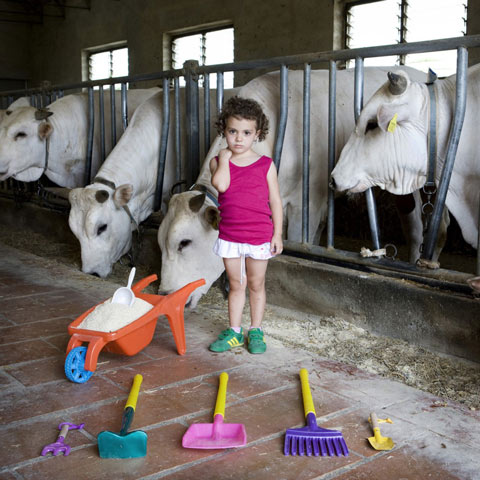
Enea- Boulder, Colorado

Chiwa- Mchinji, Malawi

Keynor- Cahwita, Costa Rica
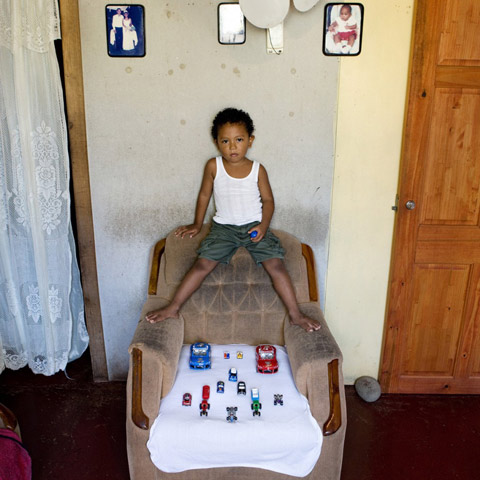
Bethsaida- Port au Prince, Haiti

Taha- Beirut, Lebanon

Cun Zi Yi- Chongqing, CHina
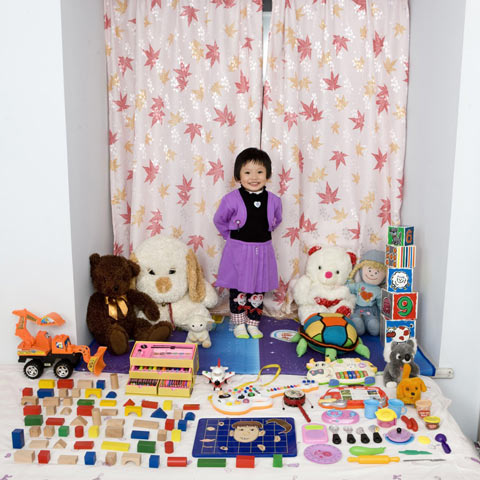
Pavel- Kiev, Ukraine

Maudy- Kalulushi, Zambia
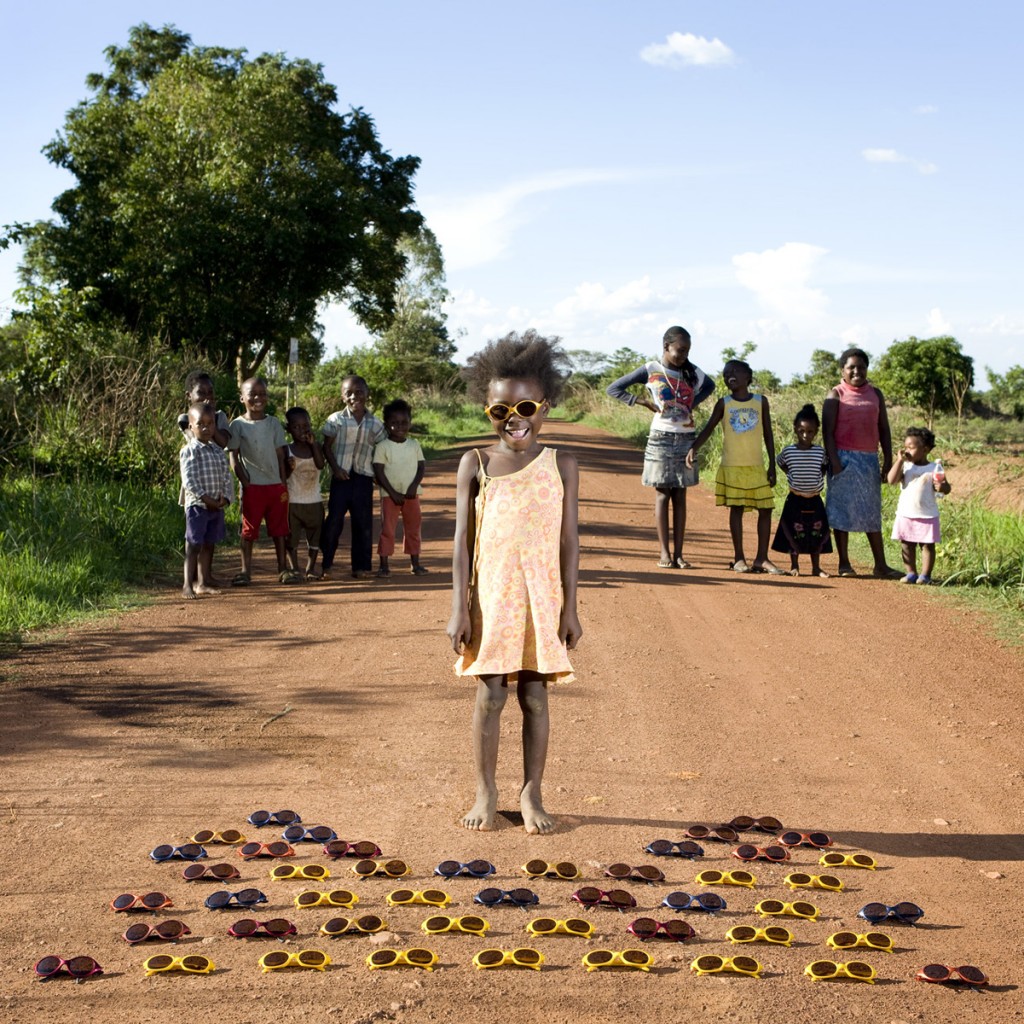
Shaira- Mumbai, India

Arafa & Aisha- Bububu, Zanzibar

Stella- Montecchio, Italy

Tangawizi- Keekorok, Kenya
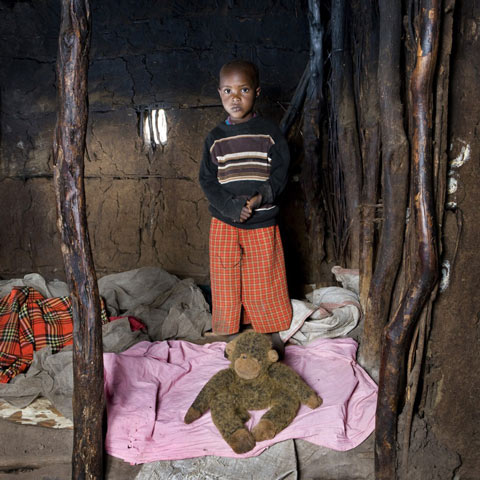
– Deena Dulgerian
Source: feature shoot, gabriele galimberti


The Shape of Poverty in India
The layout of different villages and constituencies has been involved in creating the shape of poverty in India. Villages such as Lakshmidevinagar which are impoverished with low rates of development sit close to constituencies such as Yeshwantpur which have seen higher rates of development.
A large problem with these cities is that many districts have private hospitals which service mainly those living in the rich communities. Districts like Lakshmidevinagar are home to residents from poor or middle class families. These families tend to fall through the cracks as other hospitals will not open and compete with the current hospital and government-run hospitals are far away. This problem is only exacerbated by the lack of public transportation.
The lack of public transportation is due, in part, to the poor planning of roadway construction which increases traffic. However, developments are being made and roadways are being constructed to ease traffic and provide easier access to water.
Access to clean water is another problem experienced in these districts of India. Private developers are unwilling to give up land on the banks of the Vrishabhavati river which force the residents to use oftentimes polluted parts of the Vrishabhavati.
In a country which has undergone such fast-paced and recent change, some of India’s population has acquired wealth and pulled itself from poverty. However, crime rates are always heightened in areas where the poor and rich coexist so closely. It is important that the middle and upper classes not forget the people still struggling for relief from these conditions.
-Pete Grapentien
Source: The Hindu
Photo:Flickr
Children and their Most Prized Possessions
Italian photographer Gabriele Galimberti spent months traveling the world and captured children at their most vulnerable and innocent. His efforts were compiled into the project Toy Stories which documented children with their toys. For each child, Galimberti had them spread out in a very organized fashion all or some of their prized possessions and then photographed them. The toys even reflected not necessarily the socio-economic situations of each child but their geographical location or family’s occupation.
He also noted their demeanor and interaction with both him and the toys. Children in richer countries, he found, were more possessive with their toys while those from poorer countries were much easier to quickly interact.
But don’t be quick to jump to a pessimistic view that rich children are spoiled and don’t have the decency to appreciate what they have. Though it is true, it seems, that Galimberti’s experience illustrates such a pattern but keep in mind that they are just children. However, what this project shows and will hopefully stir up is a parent’s ability to help their children, no matter how young, to become aware of their luxuries and way of life and how those aren’t the same for everyone.
The notion that children are not able to understand such serious topics is completely unfounded. In fact, their strong sense of curiosity already creates the foundation of fostering care and awareness of poverty related issues, especially when it comes to other children. By starting with them at a young age, we can have a chance at making sure the next generation is internally wired to act and think differently about poverty to help end what perhaps this generation may only come close to doing.
Alessia- Catiglion Fiorentino, Italy
Enea- Boulder, Colorado
Chiwa- Mchinji, Malawi
Keynor- Cahwita, Costa Rica
Bethsaida- Port au Prince, Haiti
Taha- Beirut, Lebanon
Cun Zi Yi- Chongqing, CHina
Pavel- Kiev, Ukraine
Maudy- Kalulushi, Zambia
Shaira- Mumbai, India
Arafa & Aisha- Bububu, Zanzibar
Stella- Montecchio, Italy
Tangawizi- Keekorok, Kenya
– Deena Dulgerian
Source: feature shoot, gabriele galimberti
3 Ways Fashion Design Is Encouraging Economic Development in Africa
Everyone loves to wear clothes that accomplish more than the utilitarian purpose of covering the body. From the posh window displays on Rodeo Drive to the highly rated network programs like Project Runway and Fashion Star, people love to wear clothes that are both artistically-creative and well-fitting. The same is true for many developing countries in Africa, where extremely talented fashion designers are looking to sell their products both at home and abroad. These African designers highlight the opportunities that fashion has created for many individuals living in poverty stricken areas. Here are 3 ways that fashion design encourages economic development in Africa.
1. It encourages entrepreneurship – For many business-minded entrepreneurs trying to overcome severe financial constraints, fashion design encourages economic development in Africa by allowing anyone with an eye for fashion an opportunity to generate income both locally and – via the internet – internationally. The market for well-designed clothes is unique based upon the simple fact that despite a global economic slowdown, consumers will always have a need for clothes. Furthermore, if a particular market for clothing is lower than usual, innovative entrepreneurs can take advantage of previously untapped overseas and emerging markets as a means of increasing sales.
2. It stimulates the local economy – For Malawian designer Lilly Alfonso, her company Lillies Creations employs 7 people from a region currently plagued with severe currency devaluation and financial strain. Fashion design encourages economic development in Africa through the employment of talented tailors, textile artists, aspiring models, and support staff necessary for the operation of large design studios; along with the resulting sales opportunities for local fabric retailers and production facilities. Fashion designers help to bolster African economies by the infusion of capital both from the sales and expansion of their small businesses into new markets.
3. It serves as a sustainable business model – Fashion design encourages economic development in Africa due to the inherent sustainability of the clothing and apparel industry. Through the local farmers providing the raw materials, the weavers who construct the fabrics, and the merchants who sell the fabrics in local markets, fashion is an industry that employs many people whose entire economic well being is contingent upon the quarterly sales of the designers. The sustainability of fashion design allows for most of the profits and accompanying investments to go back into the community, along with the eco-friendly methods of cultivation practiced by many African farmers.
In regards to how fashion design encourages economic development in Africa, designer Lilly Alfonso optimistically advises “if you know that you can do it, don’t stop it.”
–Brian Turner
Source: BBC
Flood Resistant Grass Hybrid Can Create Food Security
The effects of flooding are catastrophic to agricultural production and soil efficacy due to the resulting root suffocation – via decreased oxygen availability in the soil – and accompanying topsoil erosion. Furthermore, as global weather patterns change and previously arid areas are exposed to unseasonably high annual rainfall, an increased emphasis is being focused into developing grasses that help to attenuate the impact of flooding. In a breakthrough that’s hypothesized to help bolster global food security in the face of unpredictable weather, a newly discovered flood resistant grass hybrid may shift the advantage towards local farmers.
The newly hybridized Festulolium species of grass, grown by a collaboration between UK researchers from Aberystwyth University, Lancaster University, and University of Nottingham, combines the impressive growth rate of ryegrass with the deep root systems of the meadow fescue grass.
How exactly does the flood resistant grass hybrid help to protect crops? By deploying the Festulolium grass in and around agricultural areas, the quick turnover and absorptive qualities of the hybrid grass help to decrease water run off by more than 51 %. Thus, the sensitive roots of the crops are protected from drowning as the Festulolium grass retains much of the water and serves as a barrier to flooding.
In regards to the newly developed food resistant grass hybrid, James Hutton Institute scientist Kit Macleod noted that, “Hybrid grasses of this type show potential for reducing the likelihood of flood generation, whilst providing pasture for food production under conditions of changing climate.”
Through the development of a flood resistant grass hybrid, a much needed ally in the fight against global climate change as been identified. And thanks to the continued research towards finding innovative methods of flood reduction and water retention, adequate levels of food security will be maintained despite the unpredictable effects of climate change.
– Brian Turner
Source Science Daily
Photo NPR
Where Children Sleep
World renowned Kenyan photographer James Mollison is most known for his photo book Where Children Sleep. In it, he presents portraits of children from around the world and their bedrooms. The book, intended for a younger audience, is meant to not necessarily create a sense of guilt but more so a sense of appreciation and awareness of the different lives and home environments children around the world live in.
Indira, 7, Kathmandu, Nepal
Douha, 10, Hebron, The West Bank
Anonymous, 9, Ivory Coast
Jasmine, 4, Kentucky, USA
Ahkohxet, 8, Amazonia, Brazil
Risa, 15, Kyoto, Japan
Alex, 9, Rio de Janeiro, Brazil
The different conditions of each room can also be seen on the faces of the children in their portraits. Whether its pride, humility, confidence, or defeat, its possible to learn as much from their faces and poses in the portraits as it is from their rooms. While many of the poorer children live in small homes with multiple people, children with their own rooms can’t simply be stereotyped to be spoiled and ungrateful. To learn more about these children’s individual stories and lives, visit Telegraph’s article.
– Deena Dulgerian
Source: Bored Panda
EU Needs Genetically Modified Crops For Future Food Security
Despite understandable concerns in regards to genetically modified (GMOs) foods and the possible long term effects they have on consumers, the ability of GMOs to withstand the catastrophic consequences of pest infestation is unmatched by conventionally farmed crops. Furthermore, as the world population rises and global food demands continue to swell, scientists are becoming more concerned that current EU agriculture production will be inadequate for meeting the demands of the developing world. In an effort to both bolster current crop production and change the narrative concerning GMOs, researchers are claiming that the EU needs genetically modified crops in order to stay competitive in the technologically driven international agricultural industry.
Brought to the forefront of discourse surrounding current EU agricultural policy, scientists from Trends in Plant Science Magazine cited the considerable amount of data showing that although the cultivation of GMOs is banned – or severely limited – in the EU, the region still imports genetically modified crops from countries that have embraced the technology. EU farmers stymied by current laws regarding GMOs are unable to compete with overseas producers, thus requiring the region to import an ever-increasing percentage of their crops. In light of this, researchers are claiming that the EU needs genetically modified crops in order to maintain their own agricultural sustainability and that of their considerable humanitarian obligations abroad.
In regards to the claim that the EU needs genetically modified crops, University of Lleida Agrotecnio Center researcher Paul Christou comments that the EU is being surpassed by other nations because it hasn’t adopted technology which is deemed unpopular. “Ultimately the EU will become almost entirely dependent on the outside world for food and feed and scientific progress,” said Christou.
The issue of identifying realistic solutions to future food security problems is garnering greater and greater attention from academics, agricultural officials, and farmers looking to mitigate the problem while simultaneously bolstering their own market competitiveness and sustainability. Although stating that the EU needs genetically modified crops might upset those uncomfortable with anything but conventionally sourced food, policy changes must be enacted today in order to combat the food security problems of tomorrow. “Realizing this is the only way to achieve sustainable agriculture,” said Christou.
–Brian Turner
Source: Science Daily
Photo: Novinite
Food Security – Hydrogen Sulphide and Enhanced Plant Growth
Hydrogen sulphide, a gas known for its toxicity to both plants and humans, has rarely even been studied in small quantities. Recently, a scientist researching the effects of hydrogen sulphide on plants made a simple dilution mistake-accidentally exposing the plants to low as opposed to high levels of the gas-that yielded completely unexpected results. In a discovery that has huge implications in regards to global food security, a surprising link was discovered between hydrogen sulphide and enhanced plant growth.
Researchers at the University of Washington were researching the toxicity effects of hydrogen sulphide and mistakenly exposed the plants to a much lower concentration of the compound then they originally intended. Unbelievably, instead of dying the plants responded with an accelerated rate of growth, with seeds germinating in half the time and crop yields nearly doubling. Just to make sure, researchers replicated the experiment several times in order to verify the relationship between hydrogen sulphide and enhanced plant growth, and the plants responded with the same accelerated growth patterns.
This recent development has exciting implications with respect to global food security, as the ability to grow plants at a larger and faster rate will help meet the demands of a rapidly increasing world population.
In regards to the link between hydrogen sulphide and enhanced plant growth, University of Washington Doctoral student Frederick Dooley remarked that, “They germinate faster and they produce roots and leaves faster. Basically what we’ve done is accelerate the entire plant process.”
The ability to both expedite and enhance the germination of plants from seeds to readily available crops carries with it great implications for the future of food security. Moreover, by unexpectedly finding the previously unknown link between hydrogen sulphide and enhanced plant growth, agricultural researchers are helping to solve the world hunger problem.
– Brian Turner
Source Science Daily
Photo Kazak
Reproductive Rights and the Millennium Development Goals
The world has made huge strides towards reaching the halfway point of the Millennium Development Goals (MDGs) in terms of reducing global poverty. However, there are many African countries that will likely fall short in women’s rights standards established by the United Nations. These countries include Nigeria, Sierra Leone, Djibouti, Senegal, and Guinea. Many of these areas are deemed the worst places in the world to live in and be a woman.
The women living in these African countries lack fundamental reproductive rights, like family planning, access to contraceptives, and health counseling. When a young woman unintentionally becomes pregnant, she and her child are at risk for numerous health complications. In addition to health risks, the unexpected child puts a severe financial strain on the mother and, if the mother is in school, increases the probability that she will drop out. Thus, reducing the likelihood that the woman will obtain a high paying job later in her life contributing to gender inequality.
Another aspect of reproductive rights is the prevention of sexually transmitted diseases (STDs). Without access to contraceptives, women are at risk for STDs as well as HIV and AIDS. When women have the right to use condoms, the spread of these diseases and viruses is reduced. Condom use will also decrease the number of orphans whose parents die from HIV and AIDS. In spite of all of these benefits reproductive rights have on women and on society in general, many countries still discourage it.
Culture and social norms play an important role in determining women’s rights in many of these African countries. These are complicated issues, but a key way to ensure that a country will change is through foreign investment. By investing in health and education for women, foreign aid organizations are creating a new generation of women who will fight for their rights and demand equality. Although some countries may not meet the MDGs by 2015, with the help of foreign investment, we may see women’s rights taking a huge step forward by 2030, when the UN plans to have ended global poverty.
– Mary Penn
Source: GBN
Photo: AJWS
U.S. Army to Encourage Food Security in Afghanistan
For the past 12 years, the US Army has primarily been assigned to the role of peacekeeper in support of the NATO led military operations in Afghanistan. Subsequently, as the security operations draw to a close and military personnel began a phased withdrawal, coalition forces have a renewed focus on the long-term economic benefits of sustainable farming in Afghanistan. Sadly, many of the invaluable skill sets necessary for high yield farming have been lost, a consequence of the frequent military incursions that have occurred over the last half-century. In an effort to both ameliorate local poverty levels and build agricultural capacity, NATO is calling for the US Army to encourage food security in Afghanistan.
Soldiers of the 5-19 Agribusiness Development Team of the Indian National Guard have spent the last year instructing Afghan farmers of the Khowst Provice in the basics of farming. What tasks are being covered in the course curriculum? Army instructors are focusing on row planting, pest control, livestock care, and green house management; all important techniques that will enable farmers to increase crop yields and pass along the requisite knowledge, skills, and abilities of sustainable farming to future generations. Thus far, the program assigning the US Army to encourage food security in Afghanistan has reaped substantial dividends, with local farmers taking pride in their yearly harvests and neighboring villages working towards the purchase of farm equipment in the near future.
In regards to the policy calling for the U.S. Army to encourage food security in Afghanistan, U.S. Army Major Gregory Motz noted that, “This is the best job I have had in the Army. To be able to see the progress the Afghans have made in a year and know that it isn’t because we did it for them, but with them…The agricultural community in Khost has made leaps and bounds in the last five years. It is really exciting to be part of that.”
A program calling for the U.S. Army to encourage food security in Afghanistan is a much needed reason to be optimistic about the future of the war torn nation, as the economic opportunities afforded by a newly invigorated agricultural industry will serve as positive legacy that will outlast the violence of the last decade. Furthermore, by laying the necessary groundwork required for a rich food security program to take hold, the citizens of Afghanistan can look forward to a future high in agricultural sustainability and economic development.
– Brian Turner
Source: ClarksVilleonline
Photo: National Guard News
Coffee With Apple CEO? It’ll Cost You Big Bucks
Want to enjoy a cup of coffee with Apple CEO Tim Cook? As of now it will cost you over $210,000. Cook has volunteered, through the online-auction site Charity Buzz, to share up to an hour of his precious time with two lucky (and deep-pocketed) winners. Proceeds from the auction will go to The RFK Center for Justice and Human Rights, an international nonprofit founded as a memorial to Robert F. Kennedy by his family and friends.
In the auction’s first day, Cook received 52 bids, starting at $5,000 and spiraling upward quickly. The leading bid Thursday evening was $210,000, and there are still 19 days to go until bidding closes on May 14.
The coffee chat will happen at Apple’s Cupertino, California, headquarters. The winner may bring along one guest.
The move fits in with the more open public persona Cook has adopted since replacing late Apple CEO and co-founder Steve Jobs. One of the knocks on Jobs was that he never contributed much of his considerable fortune, or celebrity, to charity — at least not in the public ways other tech titans like Microsoft’s Bill Gates and Facebook’s Mark Zuckerberg have. Not only does this coffee date allow two lucky Apple fans to live their dream, a great PR move, but it contributes to society as well, a greater PR move.
Other celebs taking part in the auction for the RFK Center include Robert DeNiro, Alex Trebek, Carrie Underwood, Peyton Manning, William Shatner, and David Letterman.
– Katie Brockman
Source CNN
Photo Apple